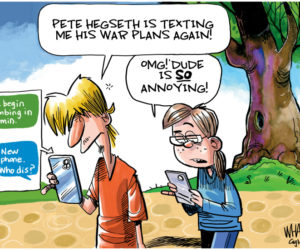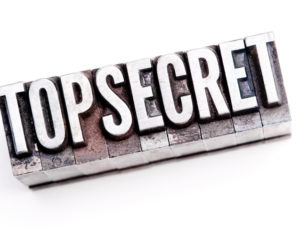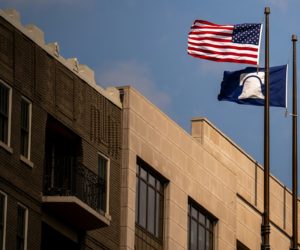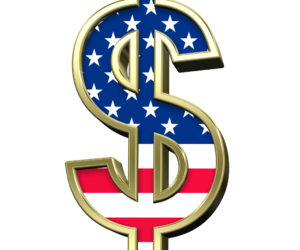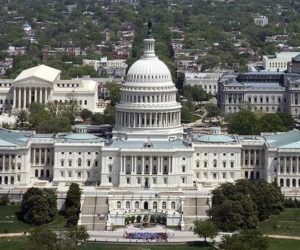
A bit of unsolicited advice for President Obama: Reduce your number of public appearances.
Even before his turn on The Tonight Show with Jay Leno, when he committed the first gaffe I remember coming from his mouth since he became a national figure in 2004, the President was at risk of being overexposed to the point of becoming background noise.
Mr. Obama is personally popular and the entire country has a stake in his success. But since the Thursday after he was elected last November, we have been hip deep in All-Obama-All-the-Time. No president in my memory has been so visible during the transition from election day to the White House.
And while it may be argued that the then-President-elect needed to assure a troubled nation facing a unique set of economic problems, Obama chose an entirely different path from that of another Democratic President-elect, Franklin Roosevelt, during a much lengthier transition, one that came at the height of the Great Depression, from his election in November, 1932 to his inauguration in March, 1933.
Roosevelt, in fact, refused overtures from the Hoover Administration to be more visible and publicly engaged, to present something of a united front on mutually agreeable measures for dealing with the economic crisis. Roosevelt, in essence, said what Obama said several times prior to his January inauguration, “We only have one president at a time.”
FDR’s ploy was surely marked by a degree of cynicism. But it also spared him the one thing any leader dreads having: responsibility without authority. The leader who is given responsibility without authority is far likelier to be blamed than to be praised. The moment a leader is perceived to take responsibility, the expectation develops that he or she will begin to exercise authority, even if they don’t have it. During his transition, Obama became the de facto leader of the nation without any presidential power. This underscores the significance of perception when it comes to being an effective leader.
All leaders—even those duly inaugurated—have only the power that others think they have. There are formal powers and informal powers that we give to our presidents. Formal powers are what the Constitution has given to every president, whether it was George Washington or Millard Fillmore, Abraham Lincoln or Calvin Coolidge. But presidents are limited in what they can achieve, even in exercising their formal powers, by the informal power given to them. Informal power is rooted in a president’s relationships with the voters, Congress, the media, and so on.
Those relationships aren’t always enhanced by constant public appearances, which is something I’m not sure this president or his staff fully appreciates. The day before the President taped his appearance with Jay Leno, he spent a little time with what was called “Baracketology” on ESPN, making his picks for the NCAA men’s basketball tournament. Sandwiched between those two TV gigs were a couple ot town hall meetings in California.
There’s nothing particularly wrong with any of those activities. The President is the head of government and he’s helped in doing that by meeting with voters, whether in person or through the media. The President is also the head of state, like kings and queens and ceremonial presidents elsewhere, the living embodiment of the country. Getting out of Washington among the people is a gesture that helps unify us. George Washington himself was the first president to recognize this: He took a tour of all thirteen original states at the conclusion of the first session of Congress, about halfway through his first term.
But Obama might well heed the example of Roosevelt, In her book, No Ordinary Time, Doris Kearns Goodwin points out that over the course of his presidency, FDR averaged just two of his famed “fireside chats” per year. He opted for such a sparing use of the media on the theory, Goodwin says, that less was more. It still is.
Admittedly, the world of 1933 to 1945, when Franklin Roosevelt was president, was very different from the one of 2009. We live in a hypermediated world of instant communication. The reputations of public figures and their beliefs, even of private figures who someone decides to display on Youtube, can be marred and dismantled in a matter of hours.
So, the President and his handlers are well-advised to stay out front, in establishing and maintaining his image and promoting his agenda. The White House does well to help us see our president for ourselves, and to decide for ourselves what he’s like and whether he can be trusted, unencumbered by the uncomplimentary slants provided by character assassins acting as pundits, policy analysts, partisan political strategists, and late night comedians.
But successful presidents must strike a balance between presence and distance. There’s nothing inherently wrong with an appearance on Leno or with giving Jay Katz your NCAA picks. But the constancy with which President Obama appears on TV, risks turning him from a formidable political figure, which he clearly is, into a Leno, or a Stewart. There’s nothing wrong with those guys. But we didn’t elect the President to entertain us. We elected him to lead us.
Roosevelt struck the balance between presence and distance. His fireside chats were like homey conversations with a caring father, a person you loved but also respected, not very different from the “Father Abraham” image cultivated by Lincoln. Neither FDR nor Lincoln were much older than Mr. Obama is today when they first effected these images. Roosevelt was 51 when he became president. Lincoln was 52. So, Mr. Obama’s age need not be an impediment to enhancing his reputation as our national father figure.
Mr. Obama has an historic opportunity to be a president who does great things. But to get there, I think that he needs to learn the lesson of less is more. There will be times for public addresses, Oval Office speeches, and the occasional appearance on an unexpected television venue. But the impact of each such appearance and address will be enhanced by the President doling them out more sparingly.
[This has been cross-posted at my personal blog.]

